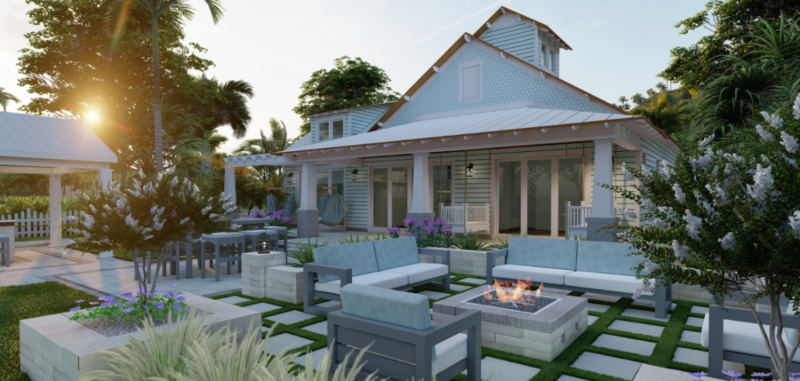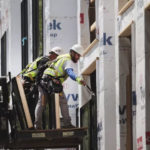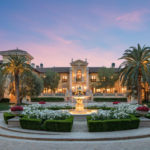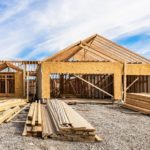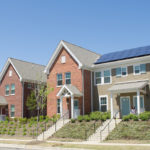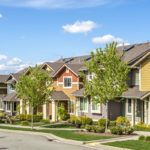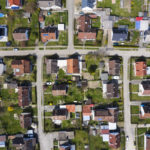Curb appeal is important, but more homeowners want a yard that is useful and fun, inspiring movement and play.
Outdoor improvements like patios, pools and flower gardens have long been homeowner priorities, but the emphasis on creating an outdoor oasis increased in recent years, largely due to the pandemic. It looks like the trend is here for the long haul as homeowners have rediscovered the power and pleasure of a beautiful and inviting outdoor space.
Maximizing outdoor space brings peace of mind and a connection to nature that’s up close and personal, and it acts as a differentiator in the marketplace when it comes time to sell.
Pools and backyard spaces reminiscent of a favorite resort resonate right now, says landscape architect Steve Chepurny, owner of Beechwood Landscape Architecture and Construction in New Jersey. Homeowners are embracing native plants that don’t require as much water or maintenance, plants that don’t need pruning, zeroscaping, and hardscape that’s permeable to conserve water.

Though creating a welcoming outdoor space is idealistic in concept, landscape experts advise a dose of reality about the cost and time. In-ground pools are expensive, dependent on labor, materials and the bells and whistles. Landscape designer Michael Glassman, owner of Michael Glassman & Associates in California, says many outdoor landscaping and revitalization projects start at about $100,000, but landscape architect Rob Schwarz, design director at Mariani Landscape outside Chicago, puts the starting cost higher. In-ground pools, for instance, can take up a considerable chunk of one’s budget for construction alone.
Space is also a factor, which is why real estate professionals can encourage homeowners to hire a professional to help decide what’s possible. The American Society of Landscape Architects and the Association of Professional Landscape Designers are good places to start.
Outdoor improvements can be vast as well. For homeowners who want to work in phases or who have an initial budget that allows only for partial implementation, master plans offer a solution. They can be costly, with a spend of between $3,000 and $6,000 on average, but they’re valuable because they help homeowners to work slowly and phase in projects, Glassman says.
Sports Fix
Backyards are often synonymous with sports and play, but a more structured approach is trending. Almost any activity is possible, from pickleball and basketball to an archery range. Putting greens have become very popular, says Chepurny. Pools remain desirable, and the wait time to have one planned and installed has decreased since the pandemic.
Also, popular options include climbing walls, volleyball courts, ping-pong tables, shuffleboard courts, trampolines, batting cages, tree houses with a theme, and even ice hockey rinks in the right climate. To make the activities more practical, franchisor My Backyard Sports offers a soft surface of tiles from a plastic-type material that snap together and can be pulled apart, says Scott Stricof, vice president of franchise development. “We have the ability to design for more than 30 sports with custom colors,” he says. A half-court for basketball might run between $18,000 and $25,000; putting greens, $20,000 to $25,000. Jeff Herman, editor-in-chief of LawnStarter, which offers outdoor services, suggests some caution when picking a sport. “Pickleball eventually will peak, and bocce ball may only be popular in some neighborhoods,” he says.
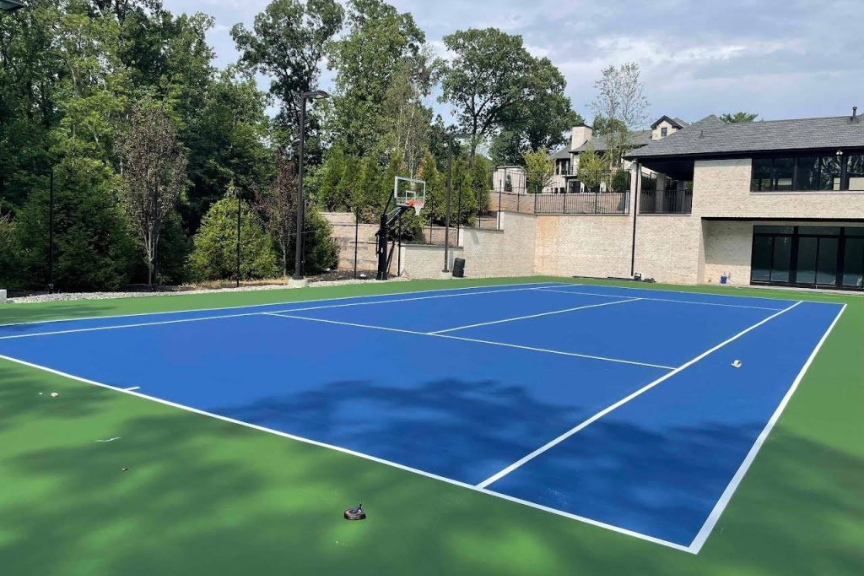
There are more modest ways to go, adds Ron Wysocarski, broker and CEO of Wyse Home Team Realty in Daytona Beach, Fla. He suggests a DIY pallet swing in a favorite color or a sandbox. Joe Raboine, vice president of design at Oldcastle APG, which manufactures pavers and retaining walls, suggests oversized chess and checkerboard sets, Scrabble boards installed on a wall, and arts and crafts tables. Trevor Lively, president of Blue Jay Irrigation in London, Ontario, says a skate ramp can be added for between $200 and $500 or a foosball corner set up for between $1,000 and $2,000. Schwarz’s firm is installing trampolines in the ground to be less of an eyesore. Play structures can be affordable and get homeowners and children away from screens, says Theresa Raymond, SRS, PSA, principal broker-owner with TN Smoky Mtn Realty in Sevierville, Tenn.
Cook, Eat, Entertain
These three activities remain a centerpiece of many yards. Tabletop pizza ovens and grills or smokers prevail, says landscape designer Amber Freda of Amber Freda Landscape Design in New York. Outdoor kitchens have been scaled down in recent years, but still include some type of grill or barbecue, storage, and countertop. Schwarz’s firm discourages outside running water in its Chicago-area climate because of freezing temperatures and municipality requirements to tie it into a home’s sanitary sewer system. For the floor, more installations are using porcelain tile. “It offers advantages of not getting as hot as darker natural stones and tolerating salt come winter,” Schwarz says.
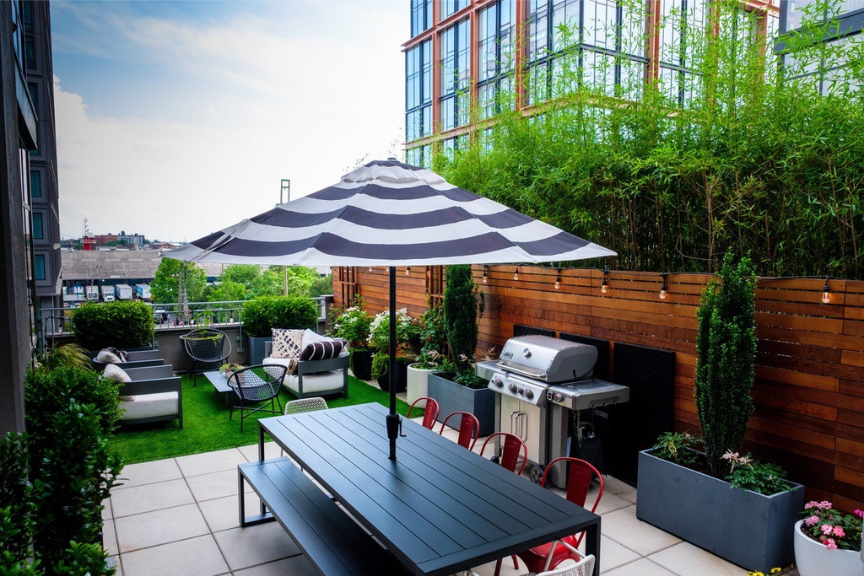
Compass New Jersey real estate saleswoman Stephanie Mallios, EPRO, in South Orange is seeing more “gar-bars”—bars built into a part of a garage so they’re usable in bad weather. “The party can then spill out into the garden,” she says. Other covered areas protect entertaining spaces. Chepurny likes to vault a roof over a terrace. Retractable, motorized shades or louvered covers also offer protection. Watching TV outdoors appeals to some who use weatherproof models that work well in sunlight, Schwarz says.
Unwind by Fire or Water
Interest remains high in gathering around a fire pit or fireplace with the source—electric, gas or wood—dependent in part on municipal rules. Freda, who has many clients in New York City and its boroughs, has clients requesting shade structures such as oversized sails, awnings and pergolas. Many also want small water features that fit into urban backyards or atop decks. She likes metal soaking tubs that permit hot or cold water, according to the season. “They’re also easy to assemble and outfit with plumbing or electricity and usually cost less than $10,000,” she says.

Even smaller water features such as an urn or vase can recirculate water and provide the sound of water trickling. These are also easier to maintain than a pond, which requires removing algae and leaves, and having a pump for a waterfall, which needs winterizing, Schwarz says.
Rethink the Lawn
While having a lush lawn was one of the hallmarks of curb appeal, a newer status is less lawn to conserve water and time, which also doubles as an environmental win, says Jim Charlier, an organizer of the annual Garden Walk Buffalo tour and co-author of Buffalo-Style Gardens.
Some homeowners switch to lower-water grasses or a clover lawn that takes care of itself and attracts pollinators, says Herman. Schwarz is using “no mow mix” versions for big borders. “It gets cut down only once a year and doesn’t require irrigation or fertilization,” he says. In some regions such as the Southwest and West, edible landscapes with blueberry bushes are in, says Raboine. In certain areas, experts may suggest a permeable material like gravel.
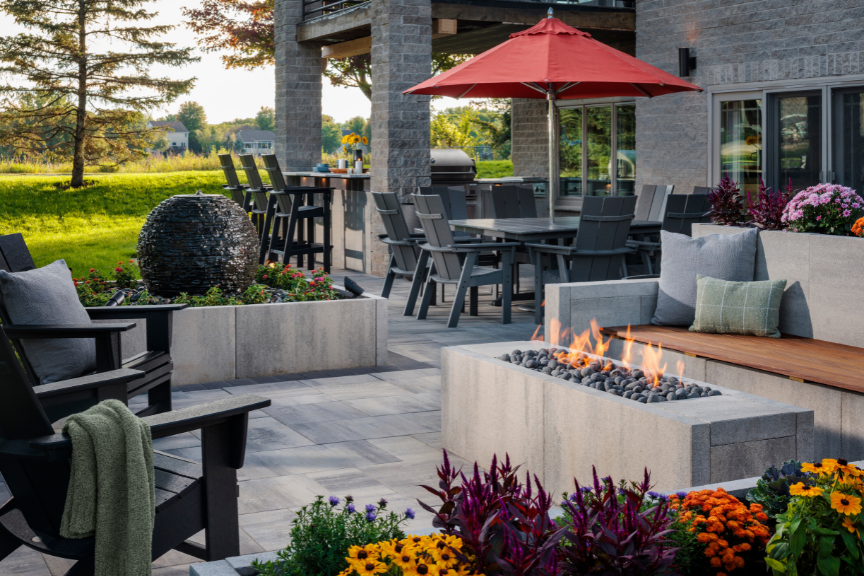
When it comes to other hardscape choices such as pavers, Raboine’s company finds that bigger formats—24 inches by 24 inches—and sometimes geometric shapes beyond rectangles are in vogue. They require fewer joints for a cleaner look, he says. Colors trend toward gray and away from earth colors. Artificial turf is more popular and not just for putting greens, but underneath playhouses and where dogs romp, Glassman says.
Try Out Farm Life
After growing more vegetables and herbs during the pandemic, some homeowners went on to plant fruit trees and build chicken coops or bring in goats and sheep. To avoid excessive bending down, Glassman says, more clients request raised planter beds or horse-style metal troughs. Schwarz’s firm suggests planting vertically. It’s become less expensive to introduce a glass conservatory for year-round growing, since less-expensive models are readily available. Container gardens also make gardening easy. “Many put house plants in them so they can bring pots in during winter or rearrange them outdoors,” Charlier says. Some homeowners are becoming beekeepers or planting pollinators to attract bees and butterflies. “You plant and sit back and watch the show,” Herman says.
Whatever features homeowners install, they should remember to add adequate sources of water, use LED lighting to extend use of the outdoor space into the night, and fence off their yard for privacy. And they should also remember that many of these features require attention and maintenance to remain looking good.
Source: nar.realtor


